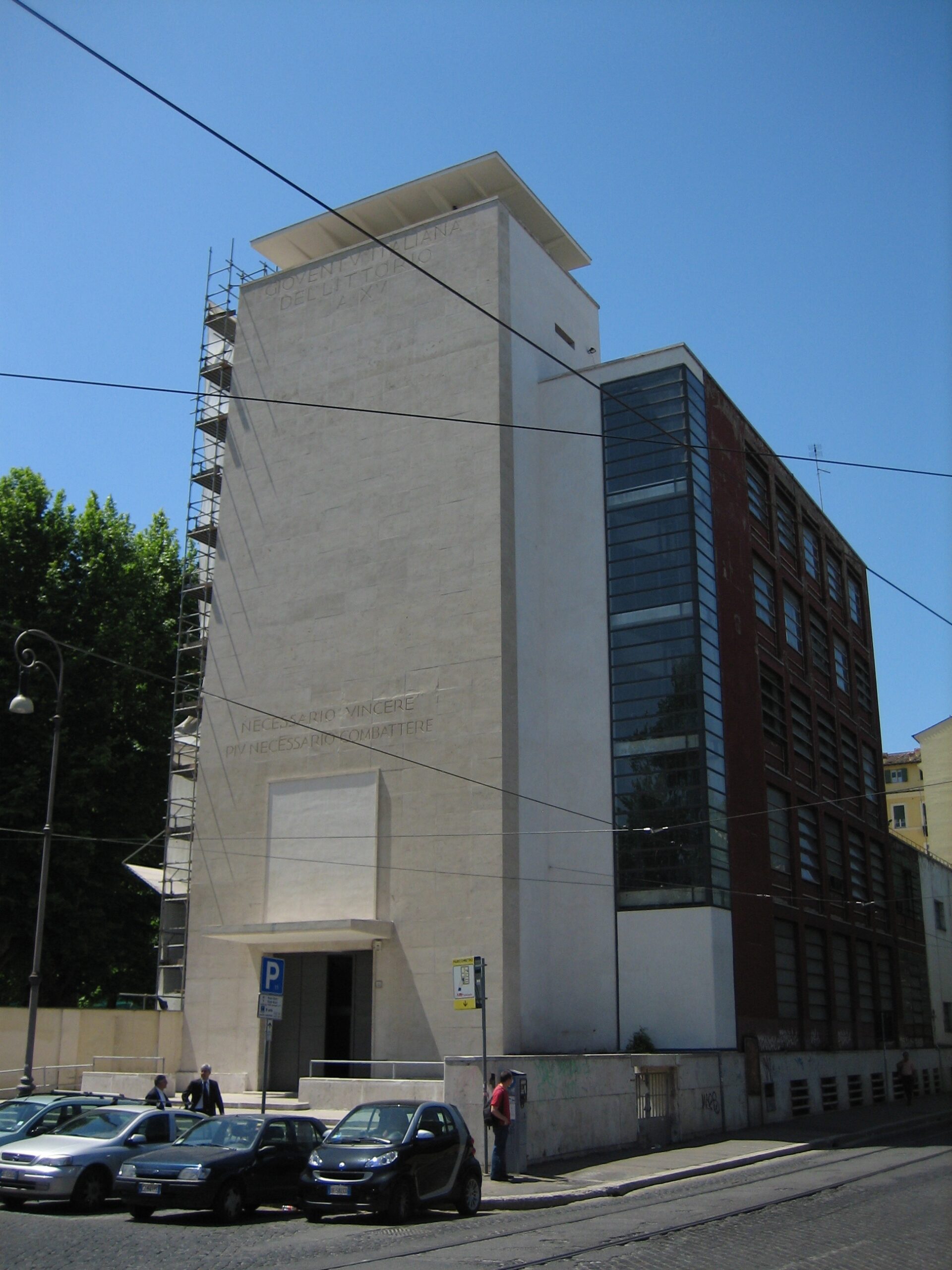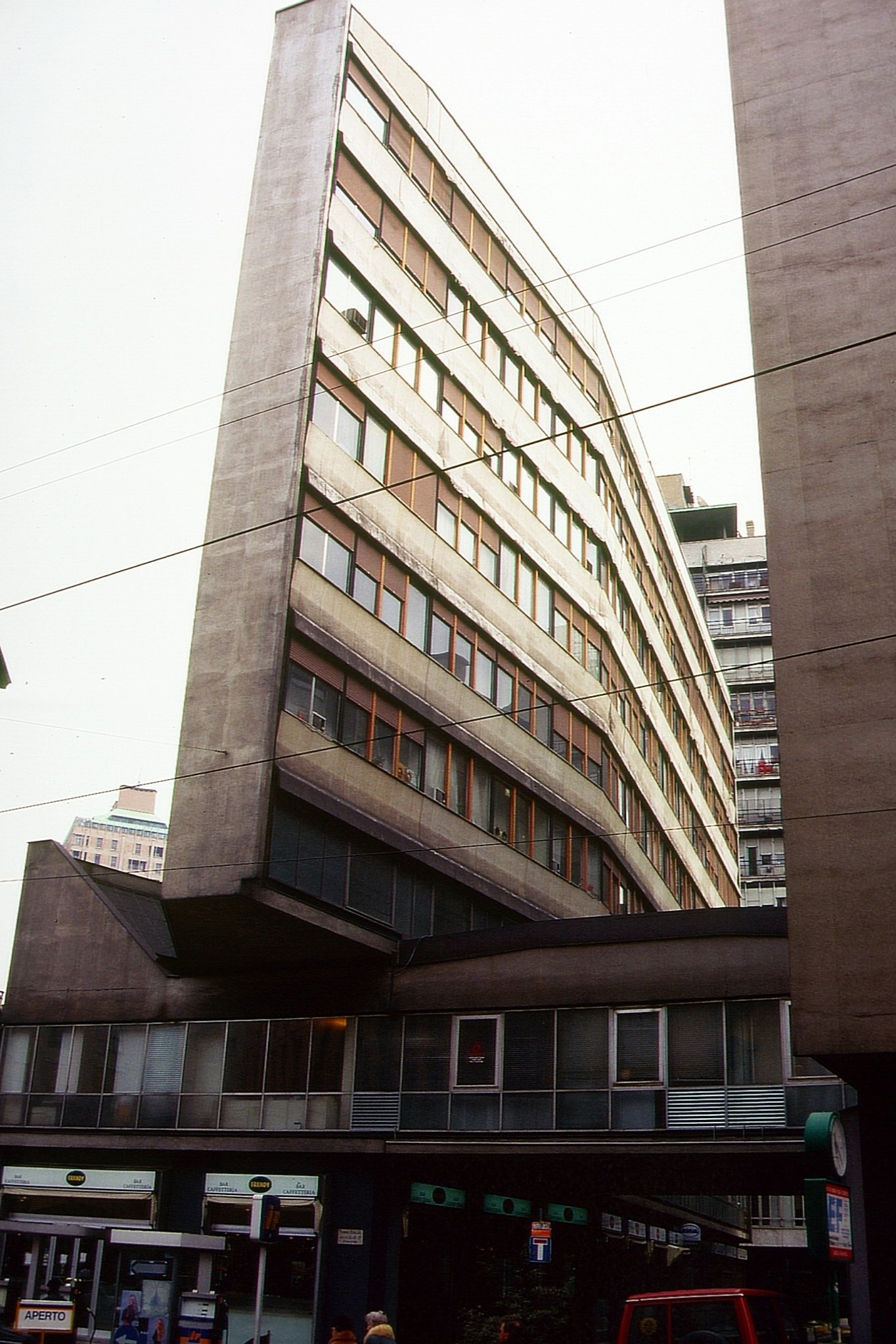By Livia Lupi
Italian architect Luigi Moretti died on 14 July 1973 on the island of Capraia. He was born in Rome in 1907 as the illegitimate son of Luigi Rolland, an engineer and architect of Belgian origin. Moretti began his career in his native city under the Mussolini regime, advancing his position through contacts in the Fascist party. His first project for the regime was the Casa del Balilla at Piacenza, which served as the local headquarters of the Opera Nazionale Balilla, an initiative aimed at disseminating fascist propaganda among youths aged six to eighteen. Moretti was then entrusted with the Casa del Balilla in Rome. This was a much more prestigious commission, since it was the first building of its kind in the capital, and the regime intended it to be the most modern and audacious structure in the whole of Europe.
After a period of inactivity during the war, Moretti designed three hotels and a block of flats in Corso Italia in Milan, a strikingly thin and arresting structure. He then went back to working in Rome, but from 1961 he became engaged in prestigious commissions abroad. Moretti collaborated in the design and realization of Montreal’s Stock Exchange Tower, acted as chief architect of the Watergate Complex in Washington, designed the headquarters of the Bedouin Engineering Club and Bedouin Houses in Kuwait, and schools, residential areas, the Club des Pins and the Hotel El Aurassi in Algeria.
Moretti was also active as an architectural theorist. In 1950 he founded a periodical and an art gallery in Rome, both called Spazio. These initiatives enabled Moretti to strengthen his international network, leading to the foundation in 1960 of the International Center for Aesthetic Research in collaboration with Franco Assetto and Michel Tapié. In addition, Moretti founded an institute for mathematical research ad its architectural applications, the Istituto Nazionale di Ricerca Matematica e Operativa per l’Urbanistica. His great interest in mathematics fed into the formulation of “architettura parametrica,” Moretti’s own architectural theory.
Reference: Alessandra Capanna, “Moretti, Luigi Walter.” Dizionario Biografico degli Italiani, Enciclopedia Treccani.
Further reading: Federico Bucci and Marco Mulazzani, Luigi Moretti: Works and Writings (Princeton Architectural Press, 2002).
Watergate Complex, Washington, 1963-1971.
Casa del Balilla, Trastevere, Rome, 1933-1936.
Block of flats in Corso Italia, Milan, 1949-1955.



